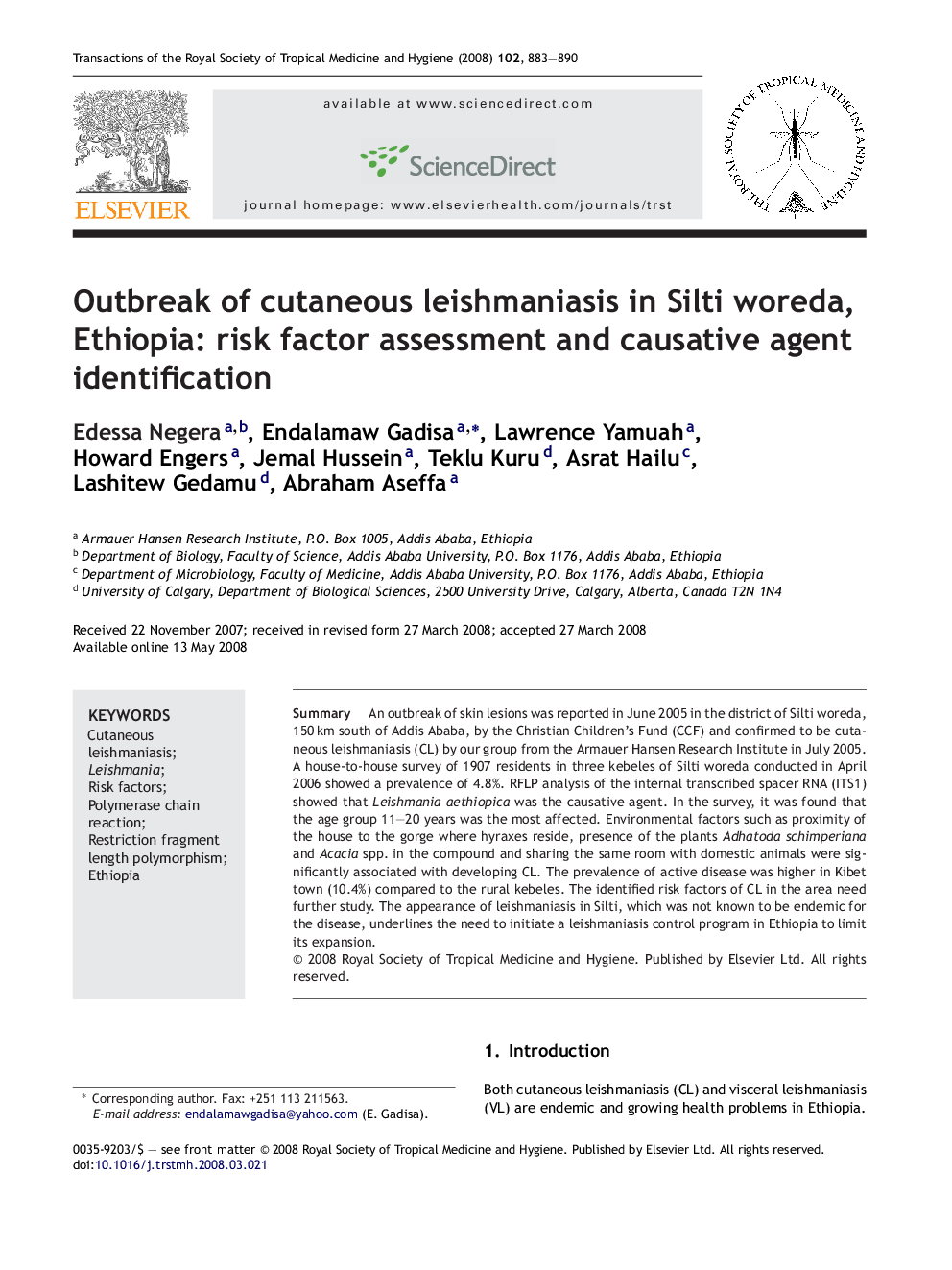| Article ID | Journal | Published Year | Pages | File Type |
|---|---|---|---|---|
| 6137425 | Transactions of the Royal Society of Tropical Medicine and Hygiene | 2008 | 8 Pages |
Abstract
An outbreak of skin lesions was reported in June 2005 in the district of Silti woreda, 150Â km south of Addis Ababa, by the Christian Children's Fund (CCF) and confirmed to be cutaneous leishmaniasis (CL) by our group from the Armauer Hansen Research Institute in July 2005. A house-to-house survey of 1907 residents in three kebeles of Silti woreda conducted in April 2006 showed a prevalence of 4.8%. RFLP analysis of the internal transcribed spacer RNA (ITS1) showed that Leishmania aethiopica was the causative agent. In the survey, it was found that the age group 11-20 years was the most affected. Environmental factors such as proximity of the house to the gorge where hyraxes reside, presence of the plants Adhatoda schimperiana and Acacia spp. in the compound and sharing the same room with domestic animals were significantly associated with developing CL. The prevalence of active disease was higher in Kibet town (10.4%) compared to the rural kebeles. The identified risk factors of CL in the area need further study. The appearance of leishmaniasis in Silti, which was not known to be endemic for the disease, underlines the need to initiate a leishmaniasis control program in Ethiopia to limit its expansion.
Keywords
Related Topics
Life Sciences
Immunology and Microbiology
Applied Microbiology and Biotechnology
Authors
Edessa Negera, Endalamaw Gadisa, Lawrence Yamuah, Howard Engers, Jemal Hussein, Teklu Kuru, Asrat Hailu, Lashitew Gedamu, Abraham Aseffa,
